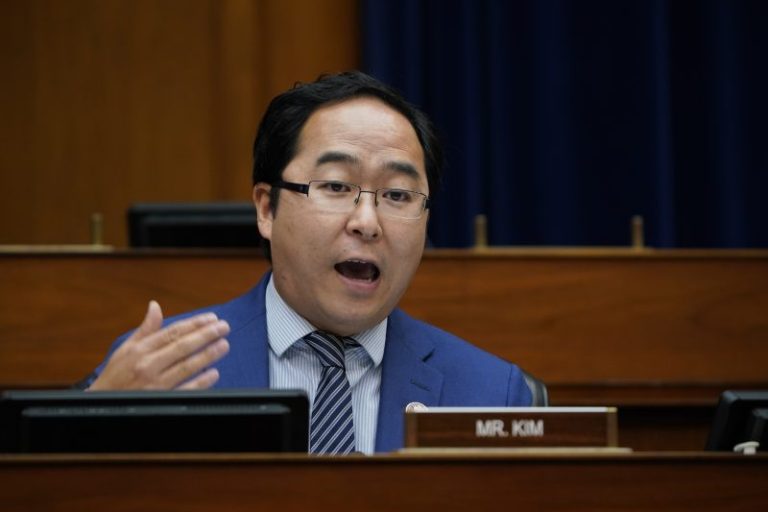Rep. Andy Kim (D-N.J.) announced on Saturday that he will challenge Sen. Robert Menendez (D-N.J.) in the 2024 primary after the senior senator was accused of being at the center of a wide-ranging corruption scheme.
Kim is among the growing number of lawmakers who have called for Menendez to step down after an indictment made public on Friday alleged that he took hundreds of thousands of dollars in bribes including in gold bars, in exchange for exerting influence for the benefit of businessmen in New Jersey and the Egyptian government.
In a statement on X. formerly known as Twitter, Kim said he felt compelled to run against Menendez after the senator refused to resign after the indictment.
“Not something I expected to do, but NJ deserves better,” Kim wrote in the post. “We cannot jeopardize the Senate or compromise our integrity.” Menendez has one other declared opponent in the Democratic primary: a real estate lender named Kyle Jasey.
Kim’s press secretary did not immediately return a call or email seeking comment. A spokesperson for Menendez did not immediately return email seeking comment but on Friday, the senator issued a statement calling the prosecutors’ claims false and “excessive.”
On Saturday, Sen. John Fetterman (D-Pa.) appeared to be the first Senate Democrat calling for Menendez’s resignation.
Menendez is “entitled to the presumption of innocence under our system, but he is not entitled to continue to wield influence over national policy, especially given the serious and specific nature of the allegations,” Fetterman said on X.
Menendez, 69, on Friday temporarily stepped down from his position as chairman of the chamber’s Foreign Relations Committee but has steadfastly refused to step down from his seat and has said he intends to run for reelection in 2024.
The Senate Democratic Caucus’s rules require any member who chairs a committee and is charged with a felony to step down from the role. The next-most-senior Democratic committee member would serve as acting chair, per caucus rules.
More members of New Jersey’s House delegation are pressing Menendez to resign. Rep. Josh Gottheimer (D-N.J.) issued a statement on Saturday commending the senator’s record on issues including gun violence, women’s rights and antisemitism, but he also said that the allegations would affect his ability to represent New Jersey in the Senate successfully.
“For the good of the state, he should step aside as he focuses on his defense,” Gottheimer said in a statement posted on X. Others on Saturday who also called for Menendez to leave office include Rep. Donald W. Norcross (D-N.J.) and Rep. Bonnie Watson Coleman (D-N.J.). They join prominent New Jersey House members like Rep. Frank Pallone Jr. and Rep. Bill Pascrell Jr. who called for Menendez’s resignation on Friday.
New Jersey’s governor, Phil Murphy (D) — who would be able to appoint someone to serve out Menendez’s term if he steps down — also called for his immediate resignation.
“These are serious charges that implicate national security and the integrity of our criminal justice system … the alleged facts are so serious that they compromise the ability of Senator Menendez to effectively represent the people of our state,” Murphy said in a statement Friday.
Menendez was indicted once before on federal corruption charges in 2015, but those proceedings ended in a mistrial in 2017. The Senate Ethics Committee in early 2018 said Menendez violated federal law and Senate rules in accepting unreported gifts from a friend and political ally, calling him to pay back the gifts he received.
Menendez still easily won reelection in November 2018 against a relatively unknown Republican opponent.
Kim, 41, has served in Congress since 2019 after he flipped his district from GOP control. He previously was an adviser in the Obama administration and has been outspoken about anti-Asian hate, especially in the wake of the coronavirus pandemic. He also gained online fame after pictures of the late-night cleaning after the Jan. 6, 2021, riot went viral.
Isaac Stanley-Becker contributed to this report.

